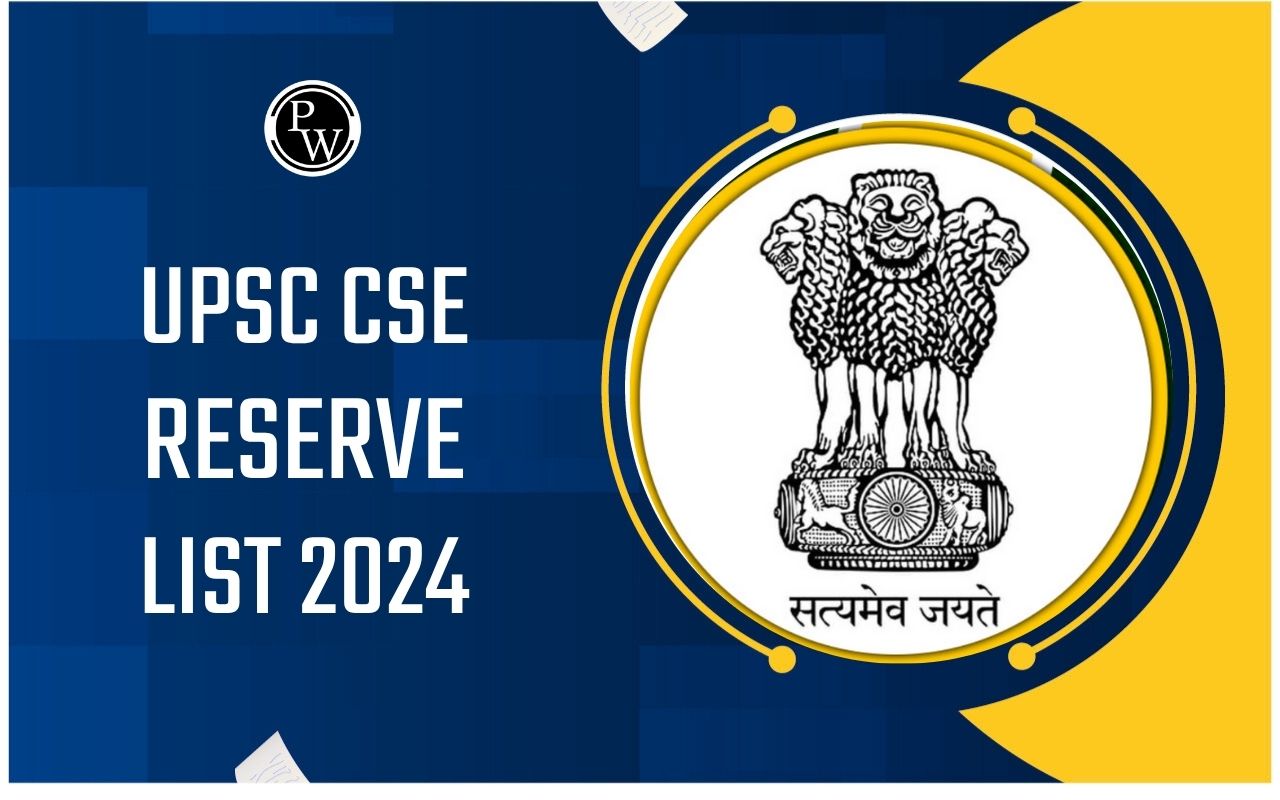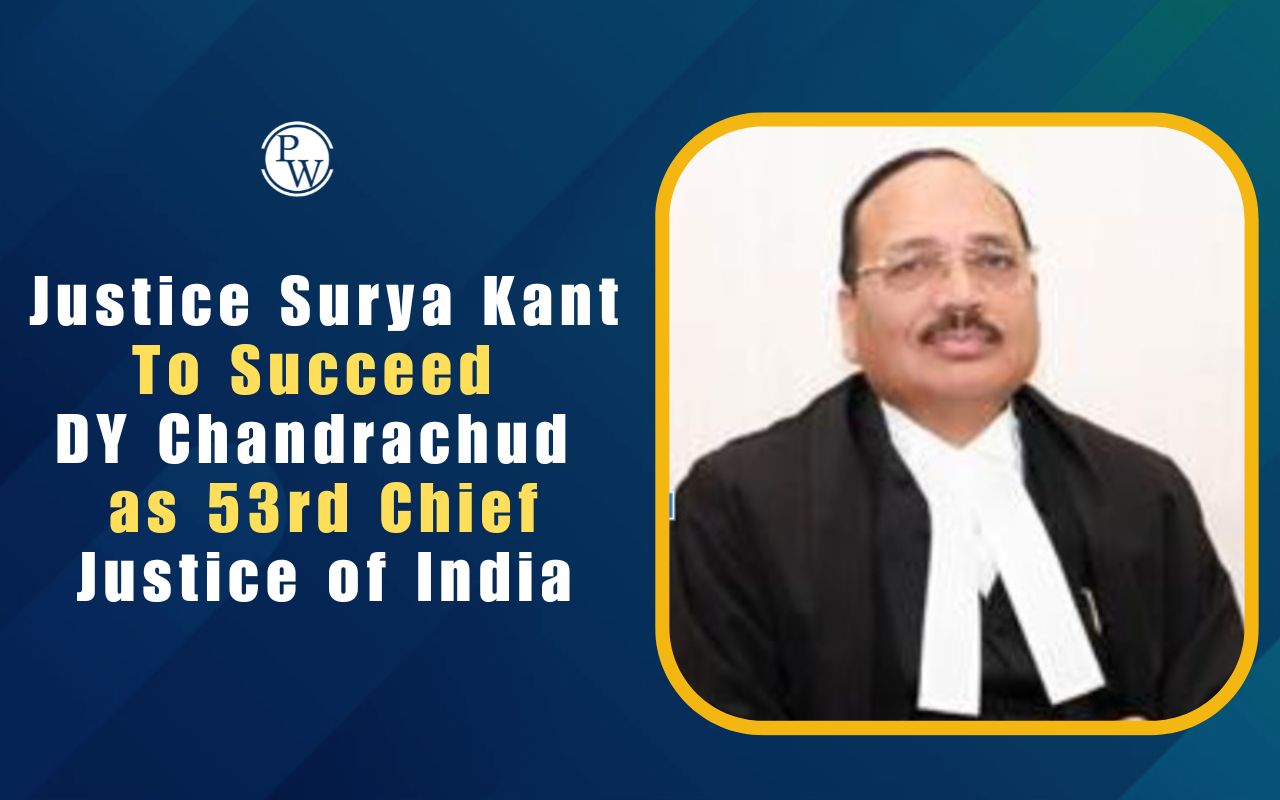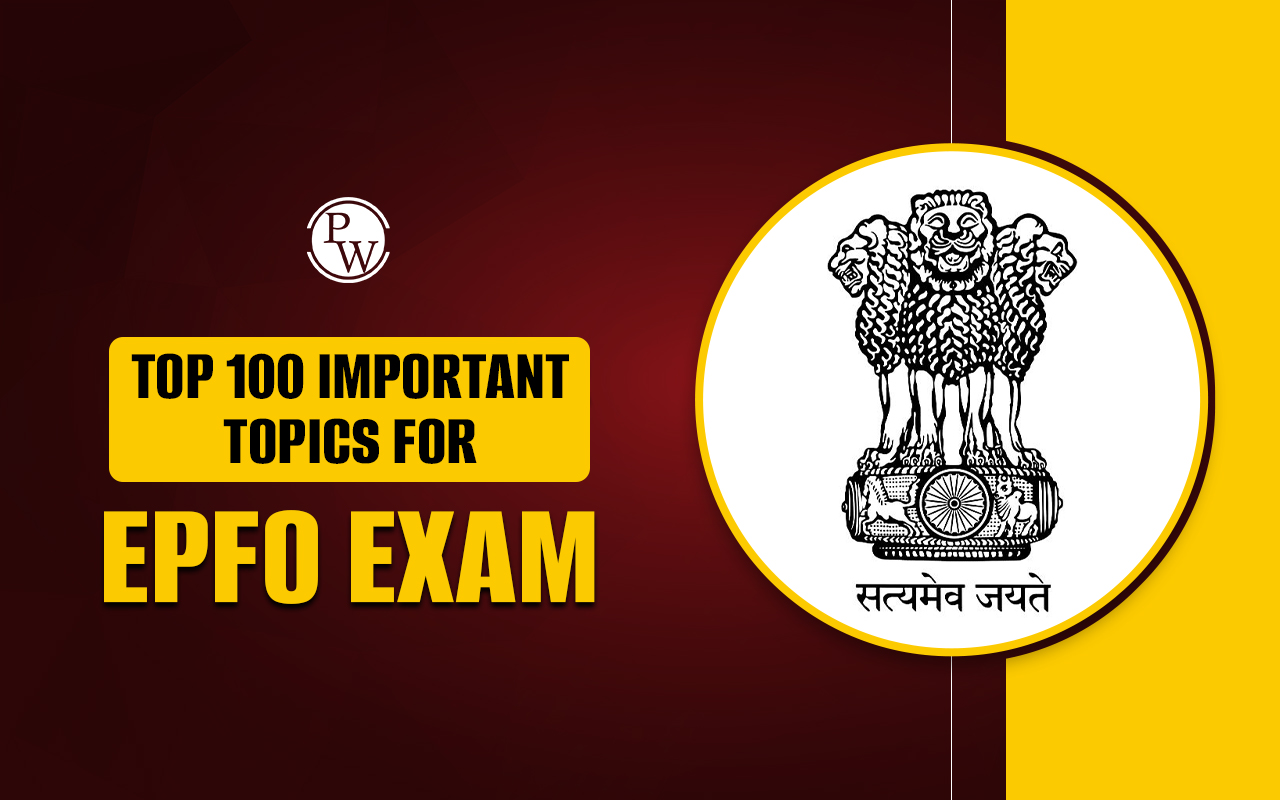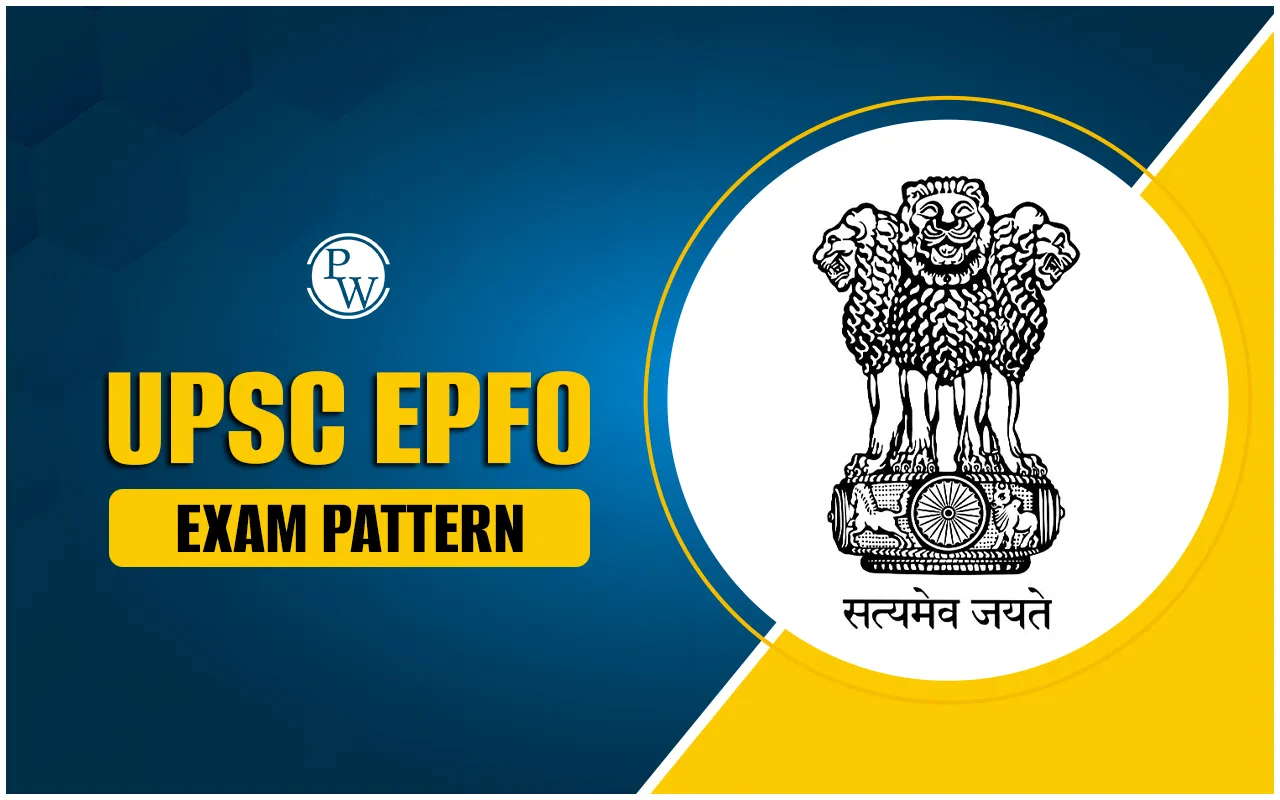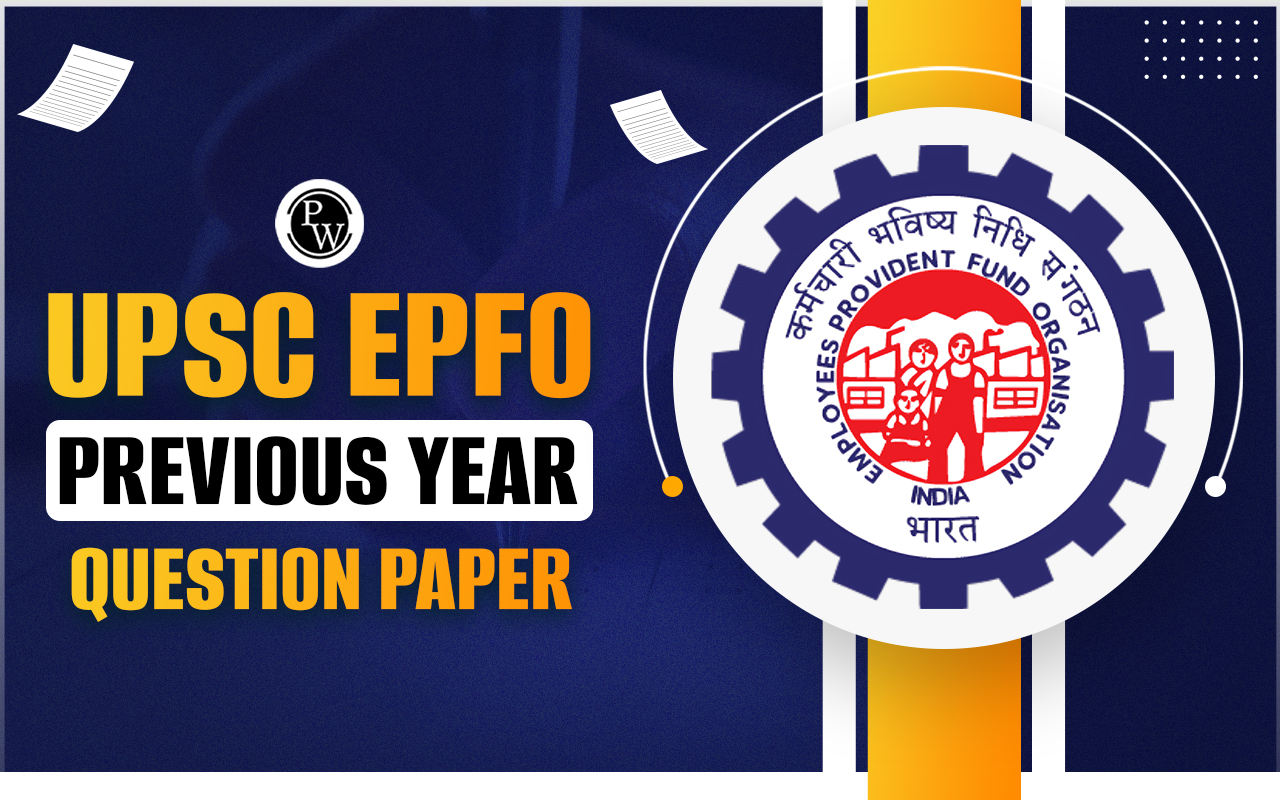
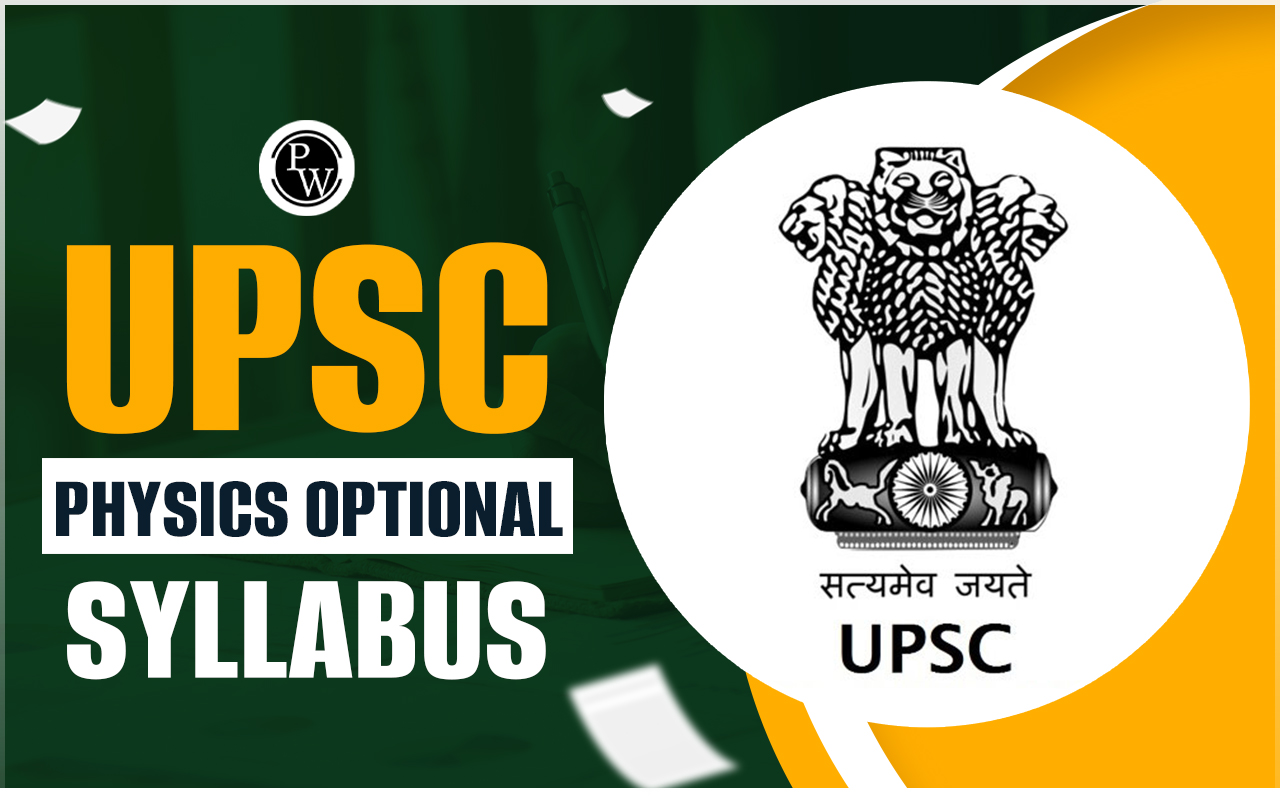
UPSC Physics Optional Syllabus 2025 : If you have completed a degree in physics or engineering and have a genuine interest in this subject, then taking ‘Physics Optional’ in UPSC Mains can be a good choice. Many toppers have opted for this subject, ditching many popular optional subjects from the list of 48 UPSC optional subjects.
With its defined syllabus, physics optional offers opportunities to score 300+ once candidates master the set pattern. Read on for a detailed syllabus, booklist, success rate, and strategy to prepare for the physics optional in the upcoming exam.UPSC Physics Optional Syllabus 2025
The UPSC Physics Optional Syllabus 2025 is divided into two papers, each carrying 250 marks, and a total of 500 marks in the Mains examination. Paper 1 focuses on classical physics concepts and Paper 2 covers modern physics topics. Below is the overview of UPSC Physics Optional Syllabus 2025 in the table
|
UPSC Physics Optional Syllabus 2025 Overview |
||
|---|---|---|
|
Paper |
Major Sections Covered |
Key Focus Areas |
|
Paper 1 |
Mechanics, Waves and Optics, Electricity and Magnetism, Thermodynamics, Modern Physics |
Classical mechanics, electromagnetism, optics, thermal physics |
|
Paper 2 |
Quantum Mechanics, Atomic and Molecular Physics, Nuclear and Particle Physics, Solid State Physics, Electronics |
Quantum theory, spectroscopy, nuclear physics, solid state, electronics |
UPSC Physics Optional Syllabus 2025 for Paper I
The UPSC physics optional syllabus 2025 for Paper I includes topics of classical physics like particles, waves, electricity, etc . Candidates should ensure they go through the entire syllabus of paper 1 and prepare each topic from standard books. Here is the distribution of physics optional subjects in the Paper I syllabus:| UPSC Physics Optional Syllabus 2025 For Paper I | |
| Topics | Subtopics |
| 1. Mechanics of Particles and Other, Special Relativity |
|
| 2. Waves and Optics |
|
| 3. Electricity and Magnetism |
|
| 4. Electromagnetic Waves and Blackbody Radiation |
|
| 5. Thermal and Statistical Physics |
|
UPSC Physics Optional Syllabus 2025 for Paper II
UPSC Physics option syllabus 2025 of Paper II covers topics of quantum mechanics, atomic and molecular physics, nuclear and particle physics, and solid state physics. For some topics of Paper II candidates are advised to refer to multiple sources and make notes for revision. Here is the complete syllabus of the second paper:| UPSC Physics Optional Syllabus 2025 Paper II | |
| Topics | Subtopics |
| 1. Quantum Mechanics |
|
| 2. Atomic and Molecular Physics |
|
| 3. Nuclear and Particle Physics |
|
| 4. Solid State Physics, Devices and Electronics |
|
| UPSC Physics Optional Exam Pattern 2025 | |
| Particular | Details |
| Total Papers | Two, Paper I and Paper II |
| Total Marks | 500 (250 Each) |
| Time Allowed | 3 Hour for each paper |
| Sections | Section A and Section B |
| Questions | Total 8 questions with subparts |
| Compulsory Question | Question No. 1 and 5 |
| Marks Distribution | 10, 15, and 20 marker questions |
UPSC Mains Physics Optional Success Rate
Physics optional is not dynamic unlike humanities therefore marks do not vary as per trends instead, they entirely depend on the performance of candidates . The formula is simple memorization and practice. This is why the success rate of this optional ranged between 6 to 10% till 2017. Here is the success rate of this optional as per the UPSC report for the year 2018:| Physics Optional Success Rate | |||
| Year | Success Rate | Candidates Appeared | Candidates Cleared |
| 2017 | 10% | 140 | 14 |
| 2016 | 6.7% | 239 | 16 |
| 2015 | 6.4% | 266 | 17 |
| 2014 | 8.8% | 147 | 13 |
Benefits of Choosing UPSC Physics Optional for Mains
It has been observed that candidates prefer to opt for popular humanities subjects like sociology, political science, and public administration due to the possibility of overlapping with GS subjects. Also, science optionals require significant additional hard work from candidates. However, natural science subjects like physics optional have their advantages, such as:- The syllabus of physics optional is fixed and rarely varies as per current events. This makes it easier for students to complete it with traditional resources.
- The nature of questions is objective, i.e., the answers are not subjective, like in sociology; therefore, trends or interpretations of the examiner do not affect the marks of candidates.
- The question paper is predictabl e based on the analysis of the previous year's question paper.
- A good knowledge of formulas and theory can help candidates easily score 280+ marks.
- Scope of the diagram, charts , and stepwise presentation to earn good marks.
UPSC Physics Optional Previous Years Question Paper
The UPSC Physics optional Syllabus 2025 previous year papers are key to success in the exam. Since the syllabus is fixed it is often observed that questions and themes keep recurring in the exam. Therefore going through the past 15 to 20 years papers is a must in this optional subject. Here is the link to download question papers to understand the high-yield themes of the exam:| UPSC Physics Optional Previous Year Question Paper | ||
| Year | Paper | Download Link |
| 2023 | Physics Paper I | Click Here |
| Physics Paper II | Click Here | |
| 2022 | Physics Paper I | Click Here |
| Physics Paper II | Click Here | |
| 2021 | Physics Paper I | Click Here |
| Physics Paper II | Click Here | |
| 2020 | Physics Paper I | Click Here |
| Physics Paper II | Click Here | |
UPSC Mains Physics Optional Preparation Strategies
The Physics optional is divided into classical physics and modern physics . Like every other optional, the physics optional also requires a proper strategy to approach every part of this subject. To begin with, go through the syllabus and analyze the minimum of the past 10 years’s question papers . Here are some preparation tips to prepare for the Physics optional from UPSC Mains:- Pick books based on expert recommendations and read at least one standard textbook for one subject. Remember, there is no substitute for book reading.
- Stick to the UPSC physics optional study material selected to cover the physics optional syllabus and focus on comprehending the topics . For instance, if you are stuck on any topic of optics, refer to online resources.
- If you find it hard to comprehend material, then join a good physics optional UPSC coaching for holistic guidance.
- Make physics optional UPSC notes for important formulas and concepts since going through books might be challenging in the last few days.
- Since a lot of numerical and derivative-based questions are asked in the UPSC physics optional, start practicing while covering the syllabus .
- Keep brushing up on the concepts as many times as possible to ensure that every topic is at your fingertips.
- Do not avoid examples in books and pick standard d iagrams from the books , such as Optics by Ajoy Ghatak. This will help you present your answer well and earn extra points.
- Solve 20+ years of question papers and join a good physics optional test series to learn time management and increase your accuracy in formula-based questions.
Top Books for UPSC Physics Optional Preparation
The booklists for Physics Optional are mostly fixed and limited. While for topics like atomic and molecular physics, the book is fixed, for certain open topics, various resources might be required. Candidates can take references from physics optional notes available in the market in addition to books, but ensure that they have gone through major ones at least four to five times.| Physics Optional Books for UPSC Mains | |
| Paper 1 Booklist | Paper 2 Booklist |
| Fundamentals of Mechanics by JC Upadhyaya | Atomic & Molecular Physics by Rajkumar |
| Electromagnetism by Satya Prakash | Quantum Mechanics by H.C. Verma |
| Classical Mechanics by D.S. Mathur | Nuclear Physics by SN Ghoshal or SB Patel |
| Optics by Ajoy Ghatak | Quantum Physics by Resnick & Eisberg |
| Thermodynamics by Garg Bansal Ghosh | Solid State Physics and Electronics by RK Puri & VK Babbar. |
| Introduction to Electrodynamics by David J. Griffiths | |
Physics Optional Toppers and Their Achievements
The UPSC physics optional paper is scoring for those candidates who prepare the concepts well and revise them as many times as possible. Some well-known toppers and their marks below represent that this optional can get you closer to success after the required dedicated efforts:| Physics Optional Toppers | |||
| Names | Marks | Year | Rank |
| Robin Bansal | 281 | 2022 | AIR 135 |
| Aniket Hirde | 312 | 2021 | AIR 98 |
| Mamta Yadav | 292 | 2020 | AIR 5 |
| Pratibha Verma | 305 | 2019 | AIR 3 |
| Avadh Singhal | 278 | 2019 | AIR 62 |
UPSC Physics Optional Syllabus 2025
Is Physics a good optional subject for the UPSC exam?
Is Physics a scoring subject in UPSC Mains?
Can I clear UPSC with Physics optional?
How many students take physics as an optional subject in UPSC?
What is the highest mark scored by a candidate in the Physics optional?

